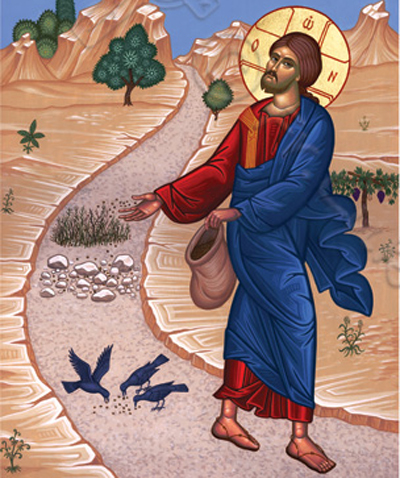Christian Art | George Herbert | The Temple | The Church | Love (2)
George Herbert | The Temple | The Church | Love (2)
Immortall Heat, O let thy greater flame
Attract the lesser to it: let those fires,
Which shall consume the world, first make it tame,
And kindle in our hearts such true desires,
As may consume our lusts, and make thee way.
Then shall our hearts pant thee; then shall our brain,
All her invention on thine Altar lay,
And there in hymnes send back thy fire again:
Our eies shall see thee, which before saw dust;
Dust blown by wit, till that they both were blinde,
Thou shalt recover all thy goods in kinde,
Who wert disseized by usurping lust:
All knees shall bow to thee; all wits shall rise,
And praise him who did make and mend our eies.
![]()

George Herbert | The Temple | The Church | Love (2)
This poem is a meditation on divine love and its transformative power. Herbert calls upon an ‘Immortal Heat’, a metaphor for God’s eternal love, to burn away human desires, preparing the soul for a purified relationship with the divine. Herbert asks that this heavenly fire ‘attract the lesser to it’, symbolizing the hope that earthly passions, with all their distractions and imperfections, will be drawn into the higher, refining flame of divine love. The fire that ‘shall consume the world’ is a vision of divine judgment or renewal that should first be felt within, turning Herbert’s own heart toward a sincere devotion.
In the poem, God’s fire is also described as enabling a spiritual clarity and devotion, as Herbert’s mind will now ‘lay all her invention on thine altar’. This suggests that every faculty of the mind and heart will be dedicated to God, culminating in hymns, or spiritual expressions, sent back to God as acts of worship. The poem’s emphasis on fire as a returning offering signifies the cyclical relationship between divine inspiration and human devotion: God’s love ignites human faith, and that faith, in turn, is expressed as an offering back to God.
The image of eyes that once ‘saw dust’ but now will ‘see thee’ reinforces this transformation. In biblical imagery, dust often represents human frailty or distraction, with the poet implying that human intellect (‘wit’) has previously misled, ‘blinding’ him from seeing the divine. This blindness, caused by earthly distractions, is removed when the soul is cleansed by divine fire, allowing the poet’s eyes to see clearly. The final lines underscore a vision of restoration: humanity, led astray by ‘usurping lust’, will return to reverence, offering its ‘wits’ and praises in recognition of God’s original gift of sight, both literal and spiritual.
The poem concludes with a universal vision of humility and reverence before God. The phrase ‘all knees shall bow’ echoes scripture, suggesting an eventual and total submission of all creation to the divine. Herbert expresses hope for a world where not only physical acts (bowing of knees) but intellectual contributions (‘all wits’) honour God, acknowledging the role of divine grace in restoring true sight and understanding. Thus, the poem combines personal prayer with a broader vision of humankind’s potential for unity and purpose through divine love and redemption.








